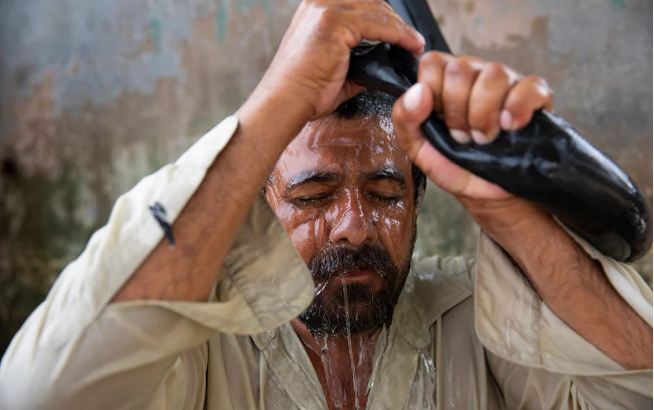Jacobabad, the city with 200,000 citizens in the Sindh province has long been known for its severe heat but recent research has conferred an unwelcome scientific distinction.
The mixture of heat and humidity in the city has made it one of the hottest places on earth. The temperature there is hotter than the human body can handle.
The city’s temperature rises to 52 degrees Celsius forcing its residents to remain inside their homes. Few have air conditioners in their homes and loadshedding in the city worsens the situation. The hospital fills with heatstroke cases from those whose livelihoods demands them to step out.
Speaking to the telegraph, a resident, Zamir Alam said, “When it gets that hot, you can’t even stay on your feet.”
“It’s a very, very difficult time when it goes beyond 50°C. People do not come out of their houses and the streets are deserted,” Abdul Baqi, a shopkeeper, added.
Mr. Matthews, who is a lecturer in climate science at Loughborough University with his colleagues analysed global weather station data last year and found that Jacobabad and Ras al Khaimah, northeast of Dubai in the United Arab Emirates, have both temporarily crossed the deadly threshold. The milestone had been surpassed decades ahead of predictions from climate change models.
The researchers inspected what are called wet bulb temperatures. These are taken from a thermometer covered in a water-soaked cloth so they take into account both heat and humidity. Wet-bulb thermometer readings are significantly lower than the more familiar dry bulb readings, which do not take humidity into account.
Researchers say that at a wet-bulb (thermometer covered in a water-soaked cloth) reading of 35 degrees Celsius, the body can no longer cool itself by sweating and such a temperature can be fatal in a few hours, even to the fittest people.
Read More: How to beat the heat without AC
According to reports, Jacobabad crossed the 35 degrees Celsius wet-bulb threshold in July 1987, then again in June 2005, June 2010 and July 2012. Each time the boundary may have been breached for only a few hours, but a three-day average maximum temperature has been recorded hovering around 34°C in June 2010, June 2001 and July 2012. The dry bulb temperature is often over 50 degrees Celcius in the summer.
As temperatures rise and rainfall patterns shift, difficulties with farming, irrigation, disease and labour are predicted by 2050 to badly hit people’s quality of living in parts of India, Pakistan and Bangladesh.







